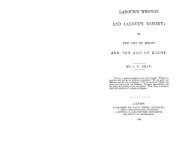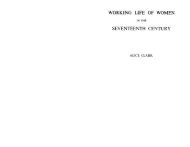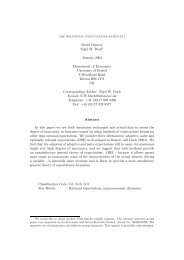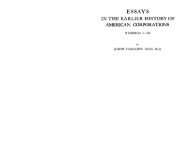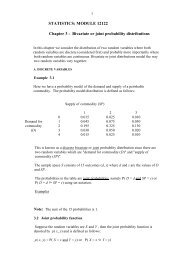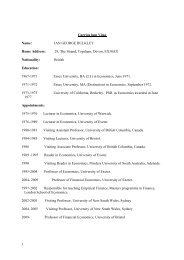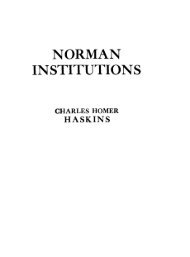Thought and Reality in Hegel's System
Thought and Reality in Hegel's System
Thought and Reality in Hegel's System
- No tags were found...
Create successful ePaper yourself
Turn your PDF publications into a flip-book with our unique Google optimized e-Paper software.
<strong>Thought</strong> <strong>and</strong> <strong>Reality</strong> <strong>in</strong> Hegel’s <strong>System</strong>/37may to all <strong>in</strong>tents <strong>and</strong> purposes be affirmation, if only two alternativesare possible, for example, the denial of the one is the affirmation of theother. 95 It is <strong>in</strong>deed true that negation may carry with it very little positivesignificance: the judgment, ‘This is not black,’ tells us practicallynoth<strong>in</strong>g so far as the actual color of the object under consideration isconcerned. But if the judgment is really a significant one, if it has anymean<strong>in</strong>g at all, it partially at least <strong>in</strong>troduces a determ<strong>in</strong>ation <strong>in</strong>to theuniverse of discourse by tell<strong>in</strong>g us, for example, that the subject of thejudgment is a colored object, <strong>and</strong> <strong>in</strong> so far it gives us positive knowledgeof the object of <strong>in</strong>terest. 96 And this negation approximates to direct affirmationas the differences with<strong>in</strong> the system <strong>in</strong> which it falls are moresharply def<strong>in</strong>ed — it is to be noted that this very def<strong>in</strong>ition may be theresult of negation; negative <strong>in</strong>stances are always more than negative.Ultimately, from the denial of blackness there might arise positive knowledgeconcern<strong>in</strong>g the actual color of the object of judgment.Now <strong>in</strong> view of the above considerations we can more clearly seewhat Hegel means by the constant assertion that the negative is the verysoul <strong>and</strong> vitality of thought. <strong>Thought</strong> is at once analytic <strong>and</strong> synthetic; itdoes not first negate <strong>and</strong> then synthesize, but it synthesizes <strong>in</strong> its negation.It denies abstract unrelatedness, <strong>and</strong> affirms <strong>and</strong> def<strong>in</strong>es complex<strong>in</strong>terrelatedness among phenomena. It rejects the unrelated particular<strong>and</strong> the blank universal as alike <strong>in</strong>def<strong>in</strong>able <strong>and</strong> mean<strong>in</strong>gless; it assertsthe necessity of identity <strong>in</strong> difference, of unity with<strong>in</strong> multiplicity. <strong>Thought</strong>as a process of mediation is thus of a two-fold nature: it is the denial ofa world of unrelated elements, <strong>and</strong> the affirmation of the world as concretetotality. Such is the double function of negation: it denies the abstract<strong>and</strong> affirms the concrete. Because thought is negative, it drives usfrom the st<strong>and</strong>po<strong>in</strong>t of immediate sense experience <strong>and</strong> forces us to seekthe eternal <strong>and</strong> true elsewhere; because thought is positive <strong>in</strong> its negation,it perforce “produces the universal <strong>and</strong> seizes the particular <strong>in</strong>it.” 97 Thus, by its very nature, thought is a process of mediation whichgives as a result, not mere abstract generalization, but real determ<strong>in</strong>ation— the concrete <strong>in</strong>dividual.I know of no better summary of Hegel’s view concern<strong>in</strong>g the negative<strong>in</strong> thought than the one which he himself has given <strong>in</strong> the preface tothe first edition of the larger Logic: “Reason is negative <strong>and</strong> dialectical,<strong>in</strong> that it dissolves the determ<strong>in</strong>ations of the underst<strong>and</strong><strong>in</strong>g <strong>in</strong>to noth<strong>in</strong>g;it is positive <strong>in</strong> that it produces the universal <strong>and</strong> preserves (begreift) theparticular <strong>in</strong> it. As the underst<strong>and</strong><strong>in</strong>g used to be taken as someth<strong>in</strong>g



